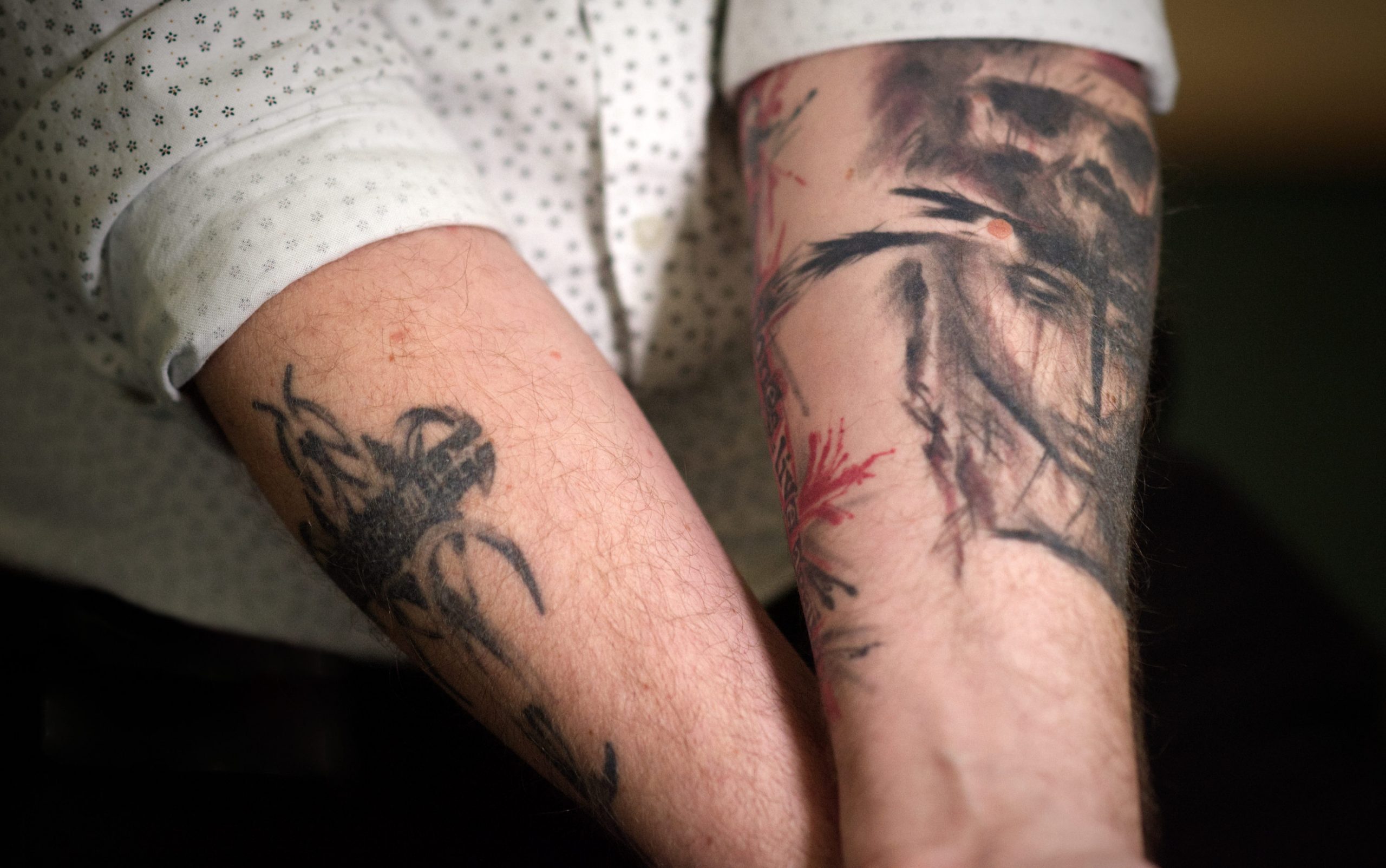My current practice is social documentary photography, which dovetails well with my primary role as a writer and photographer largely for editorial features.
I’m beginning to see convergence between my approach to personal work and my editorial assignments. In this piece on chaplains, for example, I found myself drawn less towards safe portraiture and more towards the details of the experience – the tattoo-ed arms of the chaplain, which had been re-tattoed with scripture over a previous tattoo of a busty woman, or the Muslim chaplain, whose portrait is interfered with by virtue of it being taken through glass, hopefully reflecting the interference/obstacles she has encountered in her current role. Or the emergency last rites document for nurses and doctors to read to the dying, which I spotted bathed in a shaft of light upon a table.


Falmouth, added with a dash of Coronavirus pandemic, is challenging me to think outside my box.
For editorial work, my methodology (if I have one) is to try and listen more intently and look more closely each time and to try and build an ever stronger bridge between the listening and the seeing.
A key part of my work at the moment is an attempt to become more competent with a Linhof Super Technika medium format camera. After many errors, unexposed (not to mention under/over exposed) films, and focus errors, I have finally had a film delivered with 10/10 properly exposed images. The images. relate to my ongoing work with my daughter Emma, charting her 16th year and the shifting relationship between the two of us as she moves from child to adult.

Re-photography and mixing has never been something that has previously interested me. But the lockdown is forcing me to reconsider. This week, I have been working on the Brave Faces project (a project looking at single parent dads) and how I might explore issues without current access to my primary subject matter (single parent fathers).
Emma and I have been looking through the childhood stories she enjoyed most as a child and I’ve been looking at frames within two book sin particular in which a ‘normal’ family is presented. I have then printed out sections of two letters sent to me by my own mother when we first made re-contact at the age of 27 (we’re estranged again), and made cut outs from those letters to superimpose on top of the mothers in the childhood story books.
One of the things I distinctly remember as a child was how foreign such stories were to me. None portrayed a father and son family (I had a cousin too, Clare, who felt like a sister). Every time we read such a book in school or home, I felt very self-conscious, hurt and paranoid that the teacher might have chosen that story to make me feel that way. I think my father saw that without me ever having the courage to raise it with him, and they disappeared from our own stash of books to be replaced by the incredible works of Richard Scarry.
I don’t know whether this set of images will work or whether they will find a place in the FMP. But I want to try it. And one of the things I will be particularly keen to learn from anybody who encounters them is what they see – do they see the absence, or do they see what is there? Because as the child of a single father, I learned at a very young age to focus on what I did have – my father, his love, his occasional bouts of depression – and not on what I did not (a mother/fancy clothes/expensive toys).
As an aside, writing those last lines has surfaced a memory. It involves worms. I remember my father and I building a sandpit together and I accidentally drove a shovel through a worm. I was distraught that I had killed a living creature. My father told me that worms can survive such things, that I had accidentally created two worms. And sure enough, the two sections did wriggle away. That I still remember this so vividly, tells me that moment carried enormous significance to a young Laurence (age five or six, if memory serves). And I think I have it figured out – in that moment of trauma (the supposed death of a worm) I was given a glimmer of hope that survival was possible. It was a metaphor for my parents being split in half and a demonstration that my father and I too might survive.




